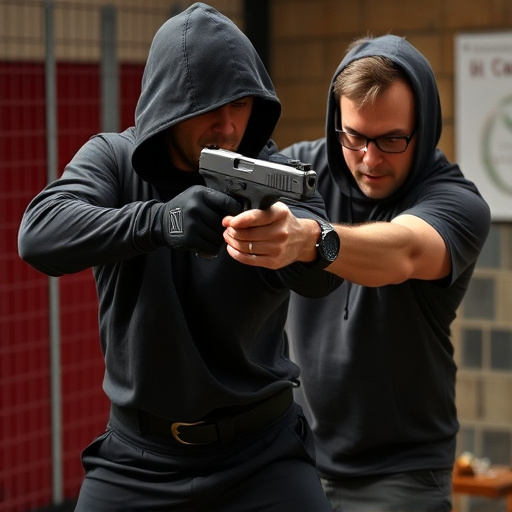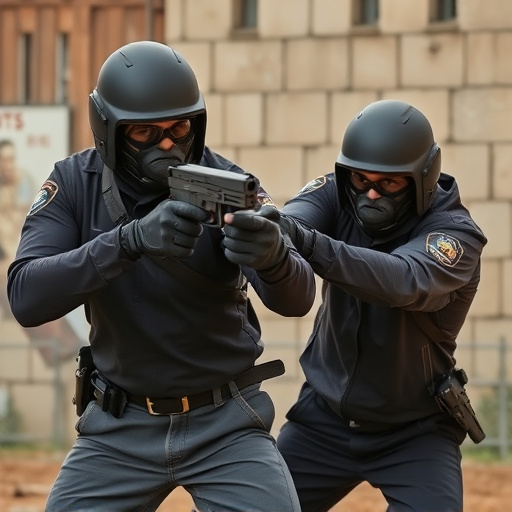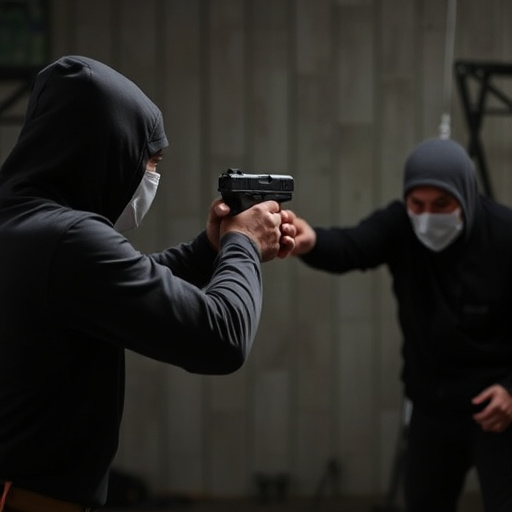Stun guns with safety features designed for beginners offer non-lethal self-defense, featuring automatic shut-off, adjustable stun levels, and user-friendly designs. These tools are appealing due to their temporary incapacitation of attackers without permanent harm. Key selection criteria include models with motion sensors, simple controls, compact forms, and adjustable voltage settings. While stun guns disrupt muscle control, tasers use probes to paralyze targets, with stun guns posing lower injury risk. Prioritizing safety mechanisms like multi-stage triggers and comprehensive user manuals is essential for responsible use, along with understanding local laws regarding stun gun ownership.
“In today’s world, personal safety is a top priority. Handheld electrical self-defense weapons, like stun guns, offer individuals an additional layer of security. This comprehensive guide delves into the comparison of these devices, focusing on their key features and safety aspects ideal for beginners. From understanding the fundamentals to exploring stun guns vs. tasers, we’ll equip you with knowledge. We present top-rated picks for effective yet safe devices, along with insights on training and legal considerations for responsible ownership. Discover how these tools can empower you while prioritizing your well-being.”
- Understanding Handheld Electrical Self-Defense Weapons
- Key Features to Consider for Beginners
- Stun Guns vs. Tasers: Unlocking the Differences
- Top Picks for Safe and Effective Devices
- Training and Legal Aspects for Responsible Ownership
Understanding Handheld Electrical Self-Defense Weapons

Handheld electrical self-defense weapons, commonly known as stun guns, are non-lethal devices designed to incapacitate an attacker temporarily. These tools have gained popularity among individuals seeking personal protection, especially for those new to self-defense. Stun guns work by delivering a strong electric current through two metal prongs or contacts, disrupting the attacker’s neuromuscular system and causing temporary paralysis.
When considering stun guns with safety features for beginners, it’s crucial to look for models that prioritize user safety without compromising effectiveness. Some key safety aspects include automatic shut-off mechanisms after each discharge, which prevent accidental continued firing. Additionally, adjustable stun levels allow users to choose the intensity of the shock, ensuring minimal harm to bystanders and providing control over the situation. Proper training and understanding the legal implications in your area are also essential components for responsible use.
Key Features to Consider for Beginners

When it comes to selecting a handheld electrical self-defense weapon, especially for beginners, understanding key features is paramount. Safety should be the top priority; look for stun guns equipped with mechanisms like automatic shut-off and motion sensors, which help prevent accidental activation and minimize risks during unexpected encounters.
Beginners also benefit from user-friendly designs offering simple controls and clear instructions. Lightweight and compact models are easier to carry discreetly without causing discomfort or drawing undue attention. Additionally, consider devices with adjustable voltage settings to cater to varying comfort levels and situations.
Stun Guns vs. Tasers: Unlocking the Differences

Stun guns and tasers are both handheld electrical self-defense weapons, but they operate differently. Stun guns emit a strong electric current that disrupts muscle control, causing the user to temporarily lose balance and strength. They are typically designed with safety features for beginners, including adjustable output levels and simple triggers, making them easier to use in stressful situations. On the other hand, tasers (or stun guns with probes) fire two small probes connected to wires, delivering a powerful electric pulse that paralyses the target for a short period. Tasers are known for their range and ability to disable multiple opponents, but they require closer contact than stun guns.
When comparing stun guns vs. tasers, safety features for beginners should be considered. Stun guns often offer more control over the level of force used, making them less likely to cause severe or permanent injury. Tasers, with their high-voltage output and probes, can leave lasting physical effects if not used responsibly. For those seeking a handheld self-defense option with built-in safety measures, stun guns with adjustable settings are often recommended as a more beginner-friendly choice.
Top Picks for Safe and Effective Devices

When it comes to choosing a handheld electrical self-defense weapon, especially for beginners, the focus should be on devices that offer both effectiveness and safety features. Stun guns, in particular, have gained popularity due to their non-lethal nature, making them ideal for personal protection. Look for models with built-in safety mechanisms like multi-stage activation triggers or stun levels, ensuring you can control the intensity of the shock and avoid accidental deployment. These features are crucial for beginners to gain confidence in using such devices responsibly.
Top picks often include stun guns with a high voltage output but low amperage settings, which are less likely to cause severe injury or permanent damage if used incorrectly. Additionally, consider options with bright LED flashlights integrated into the design, enhancing visibility during emergencies. The best weapons for beginners should be ergonomically designed, easy to carry, and come with clear user manuals and safety guidelines. Prioritizing these attributes ensures users can make informed decisions and deploy their self-defense tools effectively while adhering to safety protocols.
Training and Legal Aspects for Responsible Ownership

Owning a handheld electrical self-defense weapon, such as stun guns, comes with significant responsibilities. Beyond understanding the device’s functionality, new owners must prioritize training and legal considerations for responsible use. Many modern stun guns are designed with safety features to protect users from accidental deployment or misuse, making them ideal for beginners. Comprehensive training ensures individuals can deploy these devices effectively while minimizing risks to themselves and others.
Legal aspects vary widely based on location, with some regions allowing open carry and others restricting stun guns to specific situations. Prospective buyers should research local laws and regulations to ensure compliance. Responsible ownership includes understanding the legal boundaries around self-defense, which can help users avoid legal issues in case of accidental discharge or confrontation with law enforcement.
When choosing a handheld electrical self-defense weapon, focusing on devices with built-in safety features is crucial for responsible ownership. For beginners, understanding key features and training properly before using any device is essential. Whether opting for stun guns or tasers, selecting models designed with user safety in mind ensures peace of mind. Always remember to stay informed about local laws and regulations regarding self-defense weapons to ensure legal compliance.
